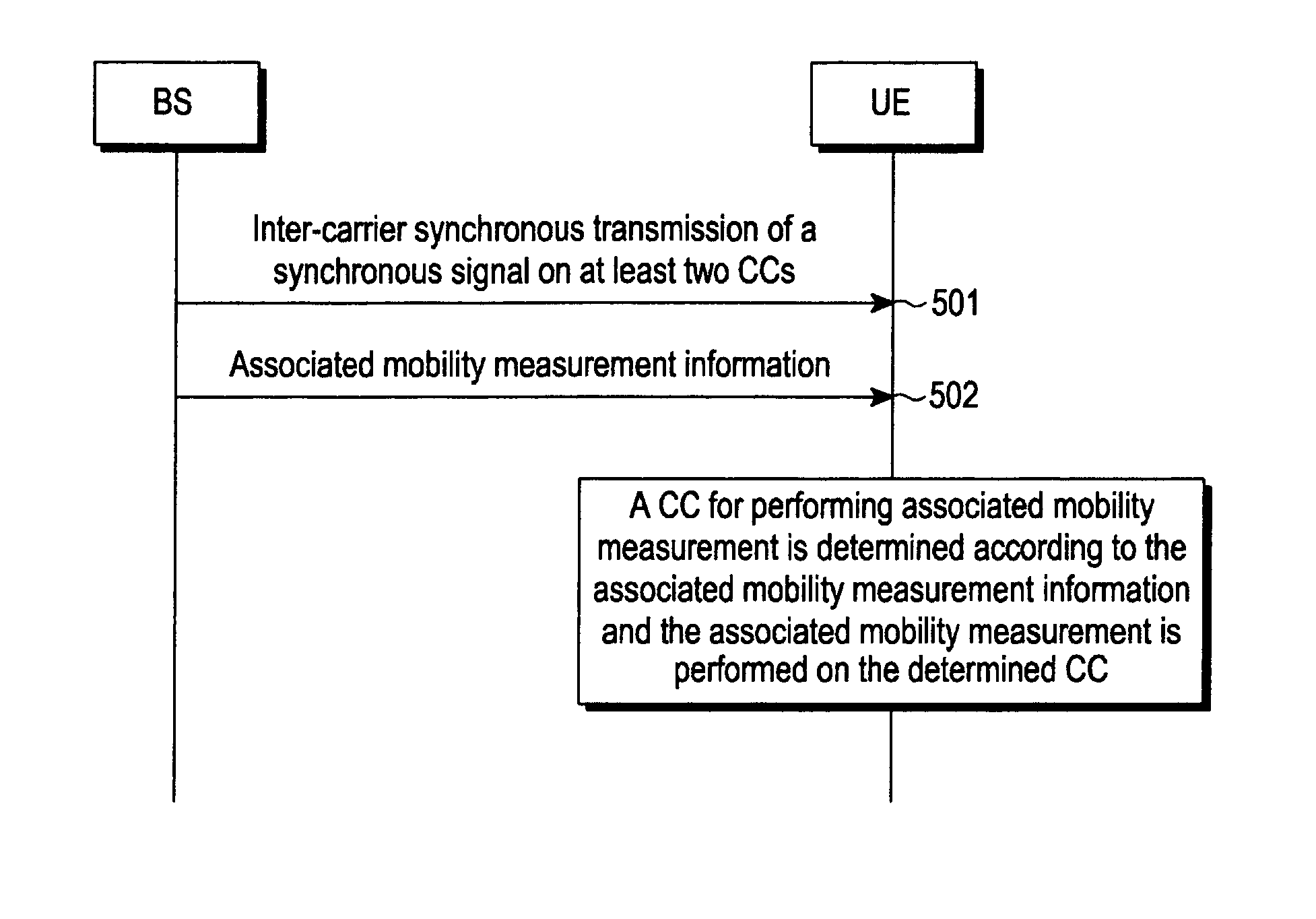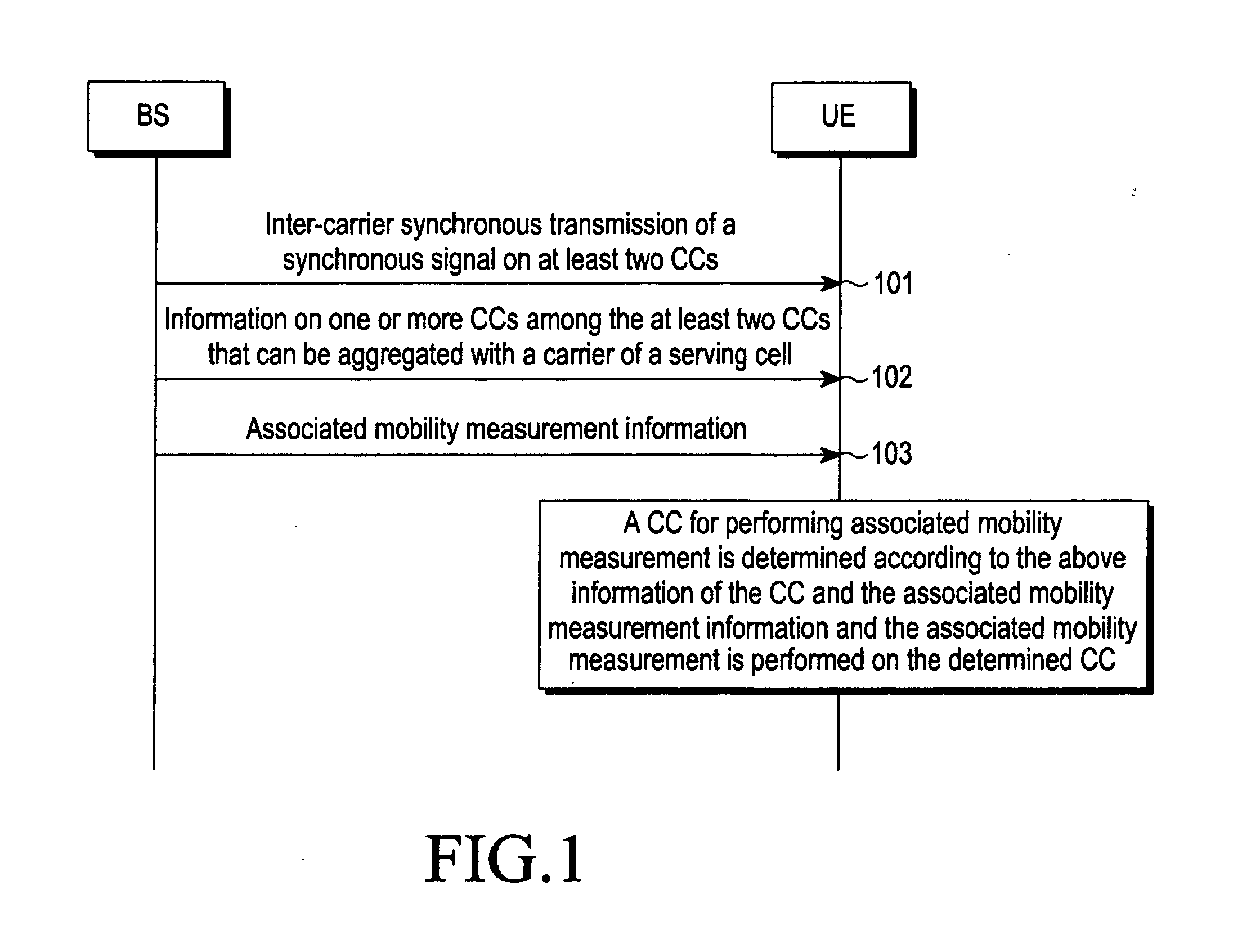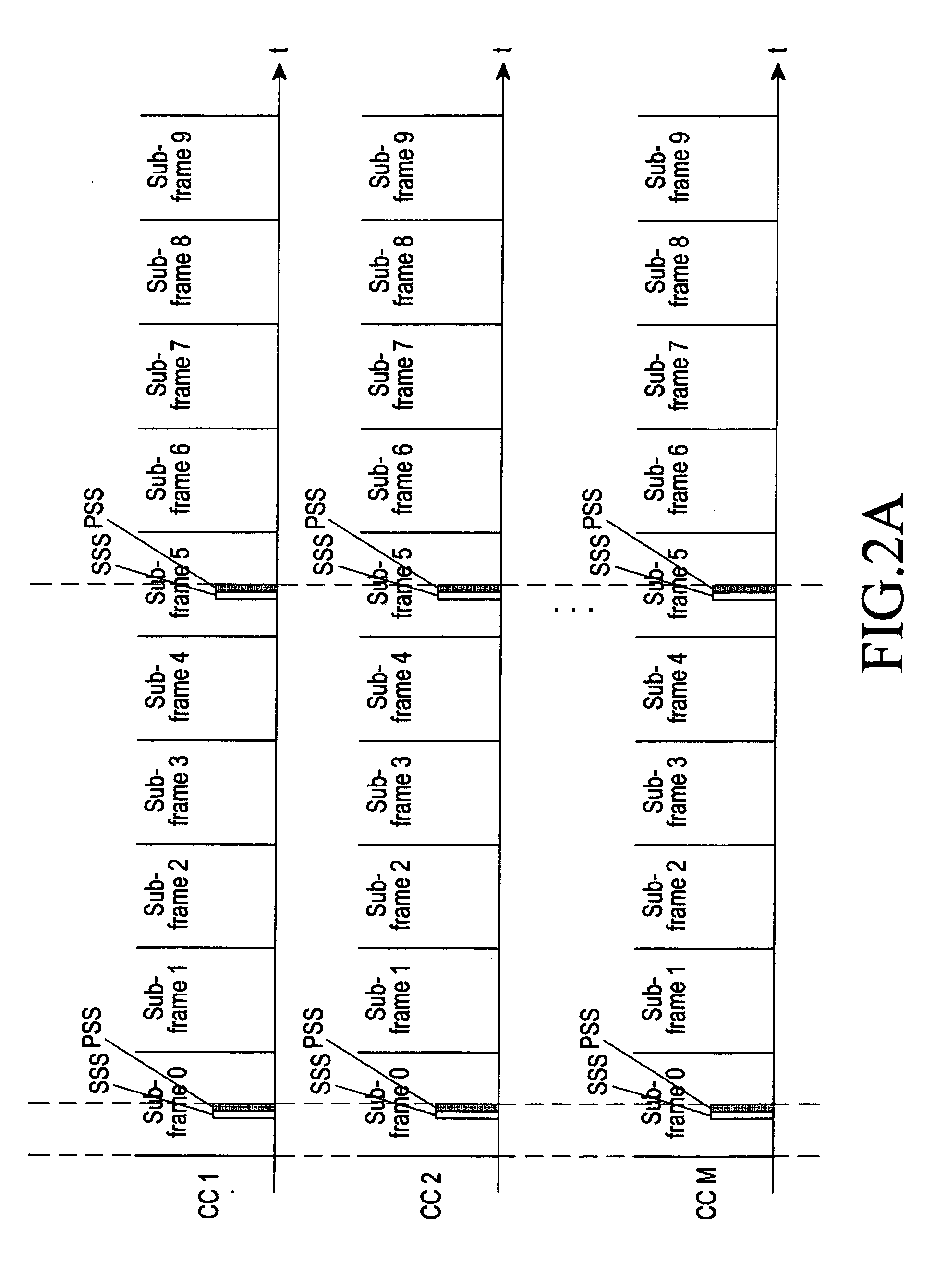Mobility cell measurement method and apparatus for mobile communications system
a mobile communication system and mobile communication technology, applied in the field of mobile communication technologies, can solve the problems of large power consumption of user equipment, large time delay of mobility measurement, and 3gpp has not determined a mobility measurement method
- Summary
- Abstract
- Description
- Claims
- Application Information
AI Technical Summary
Benefits of technology
Problems solved by technology
Method used
Image
Examples
embodiment 1
[0075]The CA uses the deployment scenario 1. That is, there are other M−1 CCs that have the same coverage range in addition to the CC k, and the M CCs correspond to the antennae having the same location and using the same PCI. Certain user equipment is located within the coverage range. Specifically, the CC k is configured as the PCC of the user equipment. That is, the cell determined from the PCC and the PCI is the serving cell of the user equipment.
[0076]According to a method of the present invention, the following is considered.
[0077]The base station to which the M CCs belongs sends the PSS and the SSS in a synchronous manner on the M CCs, and the PSS and the SSS sent on the M CCs have the same sequence.
[0078]The base station for the serving cell of the user equipment sends the information regarding the other M−1 CCs, i.e. the information regarding the CC that is capable of performing the CA with the PCC, to the UE. Specifically, the base station can select N CCs from the M−1 CCs...
embodiment 2
[0089]The CA uses the deployment scenario 2. That is, there are other M−1 CCs in addition to the CC k. The M CCs correspond to the antennae having the same location and the same direction, and use the same PCI. However, the cell covered by the M CCs has distinct coverage ranges. Certain user equipment is located within the coverage range of the cell of the CC k. Specifically, the CC k is configured as the PCC of the user equipment. That is, the cell determined from the PCC and the PCI is the serving cell of the user equipment.
[0090]Several examples of combining the above joint mobility measurement information are listed in the following. For example, the second and the seventh manners are combined. That is, the information for indicating the manner that the user equipment performs the joint mobility measurement and the information for indicating the CC required for performing the joint mobility measurement are merged. Thus, after receiving the above information, the user equipment d...
embodiment 3
[0104]The CA uses the deployment scenario 1 or 2. There are other M−1 CCs in addition to the CC k. They may have the same coverage range or distinct coverage ranges. The M CCs correspond to the antennae having the same location and the same direction, but use distinct PCIs. Certain user equipment is located within the coverage range. Specifically, the CC k is configured as the PCC of the user equipment.
[0105]According to a method of the present invention, the following is considered.
[0106]The base station to which the M CCs belongs sends the PSS and the SSS in a synchronous manner on the M CCs, and the PSS and the SSS sent on the M CCs have the same sequence.
[0107]The base station for the serving cell of the user equipment sends the information regarding the other M−1 CCs, i.e. the information regarding the CC that is capable of performing the CA with the PCC, to the UE. Specifically, the base station can select N CCs from the M−1 CCs according to channel conditions on each CC or se...
PUM
 Login to View More
Login to View More Abstract
Description
Claims
Application Information
 Login to View More
Login to View More - R&D
- Intellectual Property
- Life Sciences
- Materials
- Tech Scout
- Unparalleled Data Quality
- Higher Quality Content
- 60% Fewer Hallucinations
Browse by: Latest US Patents, China's latest patents, Technical Efficacy Thesaurus, Application Domain, Technology Topic, Popular Technical Reports.
© 2025 PatSnap. All rights reserved.Legal|Privacy policy|Modern Slavery Act Transparency Statement|Sitemap|About US| Contact US: help@patsnap.com



